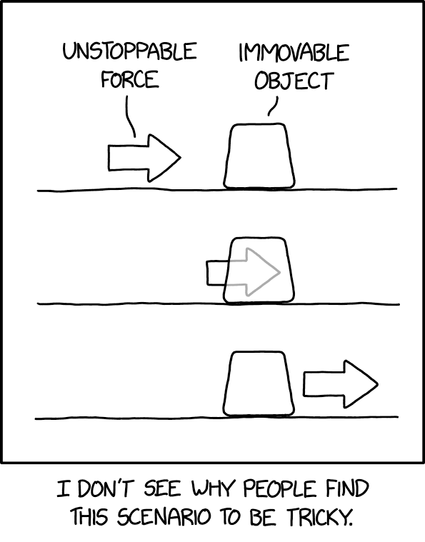QUINCKE ROTATION
If you put a tiny ball of polyethylene in castor oil and turn on a uniform, unchanging electric field, the ball may start turning around! If you know any physics, this should seem impossible. How does it work?
I read that
The spontaneous rotary motion of a solid, dielectric particle in a low conductivity fluid under a direct current (DC) field was observed by Quincke in 1896 and is now commonly referred to as ‘Quincke rotation'.¹
and
Quincke rotation is best explained using the much celebrated Melcher-Taylor leaky dielectric model that proposes the formation of a surface charge on the particle-liquid interface. Rotation occurs due to the symmetry breaking of the charge distribution that gives rise to a net torque leading to steady rotation of the particle.²
But I'm still mystified by how it can happen - why should an asymmetrical charge distribution on a particle in a constant electric field make it want to keep turning around, instead of turning enough to line up with the field and then coming to rest?
If the particle keeps turning in a viscous fluid, it must be draining energy from the electric field, no? But how is that possible in this setup?
Below you can see a movie of the effect.³
¹ Jason K. Kabarowski, Aditya S. Khair and Rahil N. Valani, Hydrodynamic memory and Quincke rotation, https://arxiv.org/abs/2503.03420.
² Debasish Das and Eric Lauga, Active particles powered by Quincke rotation in a bulk fluid, https://www.damtp.cam.ac.uk/user/lauga/papers/162.pdf
³ Gerardo E. Pradillo, Hamid Karanib and Petia M. Vlahovska, Quincke rotor dynamics in confinement: rolling and hovering, https://pubs.rsc.org/en/content/articlelanding/2019/sm/c9sm01163c





